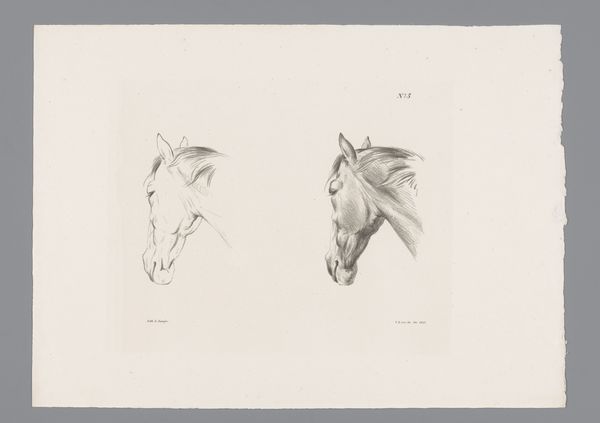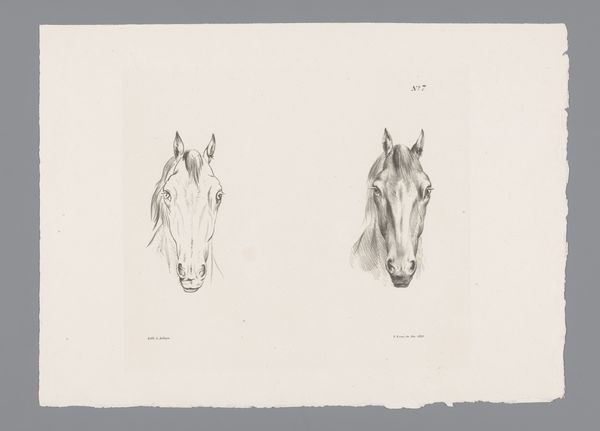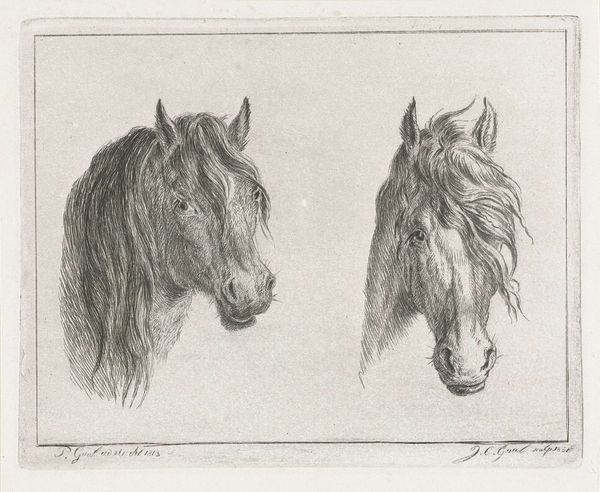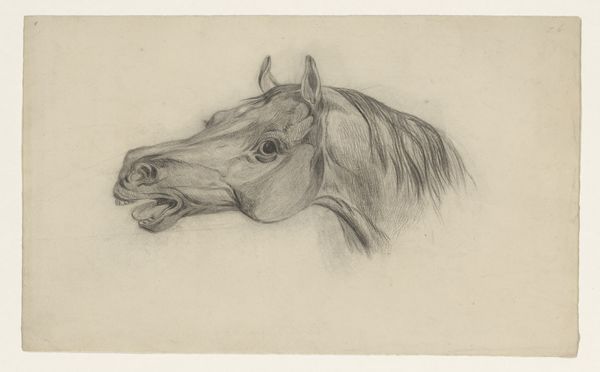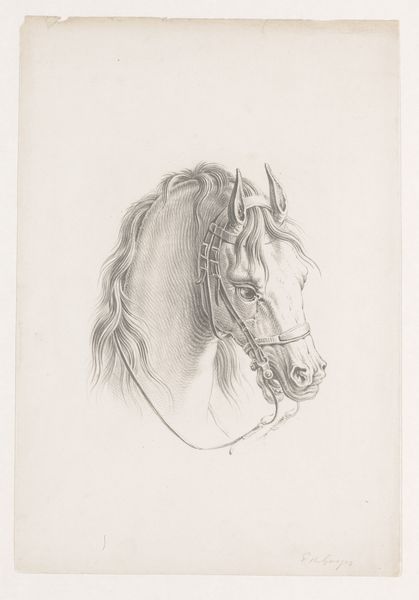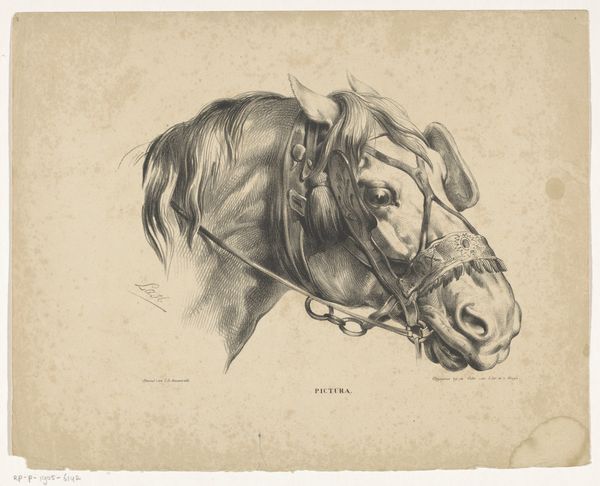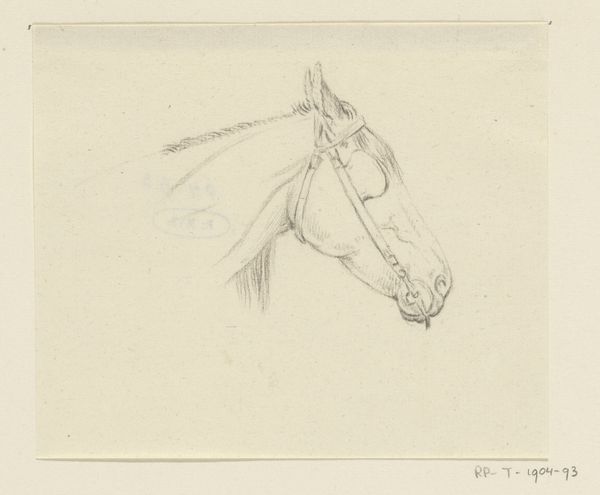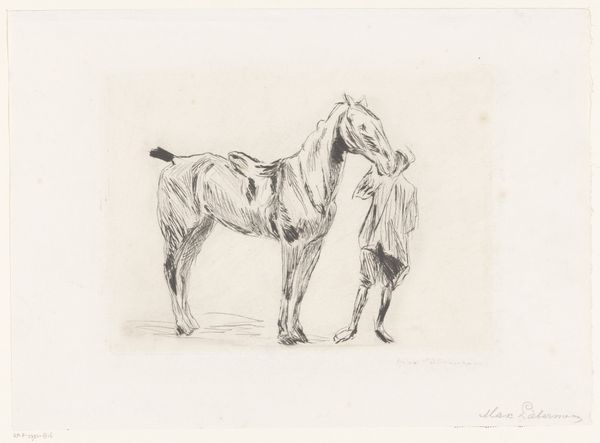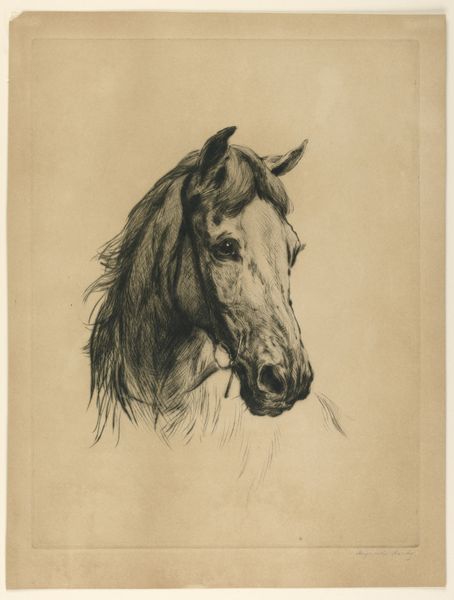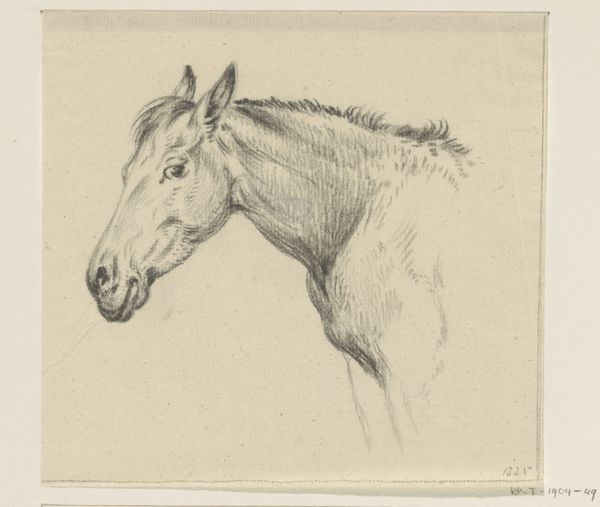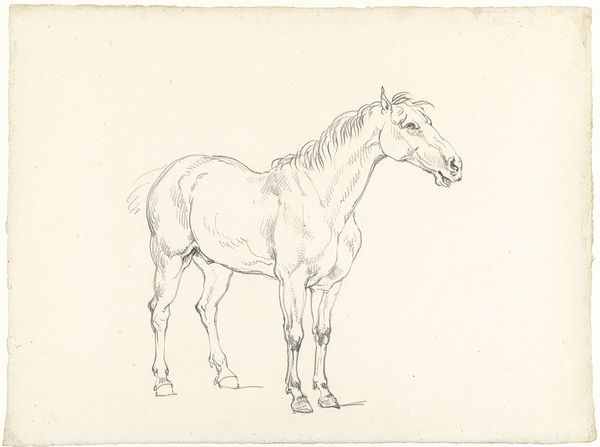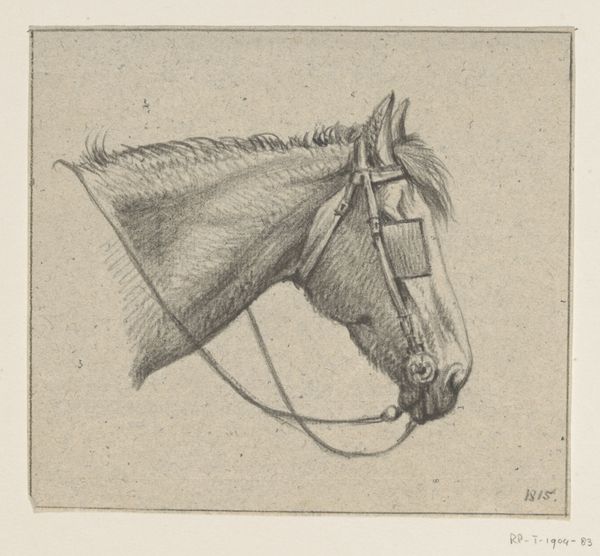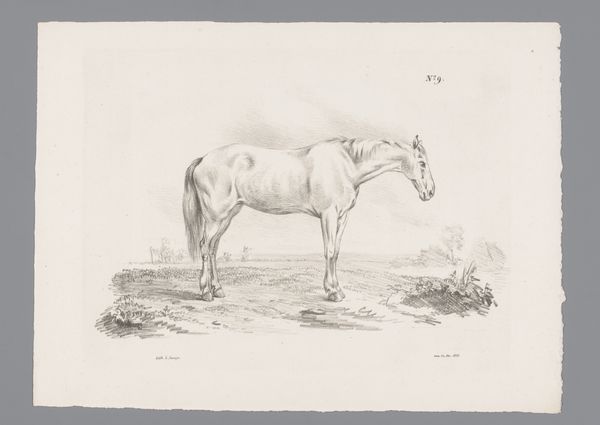
drawing, pencil, graphite
#
portrait
#
drawing
#
animal
#
landscape
#
form
#
romanticism
#
pencil
#
horse
#
line
#
graphite
#
sketchbook drawing
#
history-painting
#
realism
Dimensions: height 255 mm, width 347 mm
Copyright: Rijks Museum: Open Domain
Curator: Allow me to introduce Pieter Frederik van Os's "Two Studies of a Horse's Head," a graphite and pencil drawing created around 1835. Editor: Oh, wow. There's such a beautiful, quiet strength radiating from those sketches. It feels like witnessing the artist connecting with something primal and essential. The delicate pencil strokes make the animals look almost ghostly. Curator: Interesting observation! From a materialist perspective, these aren't just portraits; they represent the socio-economic role horses played in 19th-century Dutch society— agriculture, transport, even military power. This drawing functions as a study, a component of a larger production of history painting, emphasizing skill and labour, it shows a focus on observation, a cornerstone of Realism and Romanticism. Editor: Definitely a study, I agree! But I sense that Van Os found something incredibly evocative in these creatures. The contrast between the ethereal lightness of the graphite and the sheer physical presence of a horse head… It's like capturing a spirit. Curator: Perhaps. But it's worth noting the accessibility of drawing as a medium. Paper and pencil allowed for quick studies, a form of mass production when it came to images that were more about documenting the details, making this work a tool that democratizes representation in the world. It speaks volumes about the development of Realism. Editor: That makes me think, doesn’t this raw style, with its almost scientific quality, lend itself perfectly to expressing a raw emotion that no human face could truly replicate? Almost like these aren’t studies for later use but a deep examination of non-verbal sentience in action. Curator: Indeed. Van Os's ability to translate raw material into a palpable presence, speaks volumes about art's capacity to elevate ordinary subjects. These drawings capture horses and the social and economic climate. Editor: I'll remember these ghostly steeds as embodiments of something fundamental about life and art – an attempt to capture ephemeral essence onto a tangible material. Curator: A suitable note, then. Material transformed into immaterial significance.
Comments
No comments
Be the first to comment and join the conversation on the ultimate creative platform.
